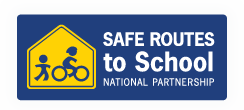Monday, May 14, 2012
Like Where the Sidewalk Starts on Facebook!
Friday, May 11, 2012
This week on foot
This week an Advocacy group says public supports federal funding for bikes, pedestrians, and according to the FHWA: Small Investments in Bike/Ped Infrastructure Can Pay Off in a Big Way. So why are we still dealing with the Buckled sidewalks emblematic of city government's failure?
Meanwhile, Three pedestrian deaths elicit varied reactions in San Francisco. Maybe they should look to Florida, where in South Beaches: Flags help with pedestrian crossings, or further north, where Chicago unveils wide-ranging transportation plan that features 20 mph speed limits in Chicago and increased crossing times for pedestrians.
Outside the US, other cities are also getting innovative with their planning efforts, like in Canada where Calgary abandons cul-de-sac design. Elsewhere in Canada, we learn Most pedestrian-involved crashes caused by turning vehicles. But another study shows that Sleepy teen pedestrians more likely to get hit. And it's not just lack of sleep that's dangerous for pedestrians. Cuba warns of rising rail danger, faster trains, and here in the US FRA Guidance on Pedestrian Safety Still Misses the Real Problem.
With all this focus on pedestrian safety and walkability, it seems odd that WeHo Tables Sat. Night, Pedestrian-Only Robertson Blvd. Plan. After all, Walkable neighbourhoods: Key to Hamilton's creative industries--why not LA's industries too? Maybe it's just beacuse Downtown ranked the 'most walkable neighborhood in Los Angeles' and WeHo is jealous?
Thursday, May 10, 2012
Free Webinar - Lessons from SRTS Award Winners
May 22 - 10:00 AM PST
One of the best ways to build a SRTS Program is to take a page from a winning playbook. Each year, the National Center for Safe Routes to School has the privilege of recognizing one Safe Routes to School (SRTS) program in the country for outstanding achievement in promoting safe walking and bicycling to school. This year - a first in the history of the James L. Oberstar Safe Routes to School Award - two schools will receive this national honor: Heatherwood Elementary School in Boulder, Colo., and Omro Middle School in Omro, Wis. In this sixty minute webinar you will have the opportunity to learn from these award winning programs.
Register here.
One of the best ways to build a SRTS Program is to take a page from a winning playbook. Each year, the National Center for Safe Routes to School has the privilege of recognizing one Safe Routes to School (SRTS) program in the country for outstanding achievement in promoting safe walking and bicycling to school. This year - a first in the history of the James L. Oberstar Safe Routes to School Award - two schools will receive this national honor: Heatherwood Elementary School in Boulder, Colo., and Omro Middle School in Omro, Wis. In this sixty minute webinar you will have the opportunity to learn from these award winning programs.
Register here.
Wednesday, May 9, 2012
May SRTS conference call
All are welcome and invited to join this month's call.
Details:
Thursday, May 10th from 9-10 am
Conference Call Number: 866-394-4146
Guest Code: 878934528#
Lots of good stuff on the agenda, including:
SCAG RTP/SCS Update and Next Steps (5 mins)
Details:
Thursday, May 10th from 9-10 am
Conference Call Number: 866-394-4146
Guest Code: 878934528#
Lots of good stuff on the agenda, including:
SCAG RTP/SCS Update and Next Steps (5 mins)
- Next Steps – lessons learned, going from here. Developing our SoCal SRTSNP Network Regional Platform 2.0
- Orange County Regional Bikeways Planning with Carolyn Mamaradlo, Associate Transportation Analyst, Transit & Non-motorized Planning, Orange County Transportation Association
Monday, May 7, 2012
Complete Streets Abu Dhabi
Lest you think the US and Europe have the monopoly on Complete Streets, take a look at this Urban Street Design Manual from Abu Dhabi in the United Arab Emirates. Aside from noting that with enough money from oil and gas production, your planning department can have a pretty snazzy website, I was fascinated by a number of small (but significant) policies that marked this design manual as unique to its city, such as:
 |
| A sikka in Abu Dhabi |
- A whole section devoted to techniques for shading sidewalks
- The use of sikkas (narrow pedestrian pathways found in new and historic neighborhoods)
- An emphasis on creating spaces that allow privacy and security for women
- The incorporation of ablution sinks into the street furniture (and reuse of their water for landscape irrigation)
True complete streets should be designed to take into account the way a particular culture uses its roadways, including spaces and features that will complement the history and demographics of a particular neighborhood. A roadway in a area with an aging population, for instance, might include a particular focus on universal design. Space for street vending or small-scale businesses might be more important in some commercial areas than room for cafe seating. As we move towards more function-driven street design, we should consider not just the generic purpose of a roadway (commercial-serving, residential neighborhood, bicycle corridor), but also the specific desires and needs of its users.
Subscribe to:
Posts (Atom)










